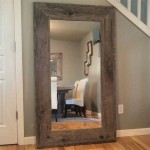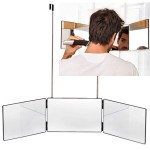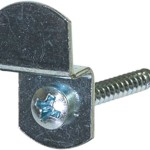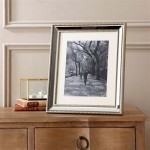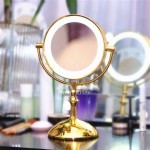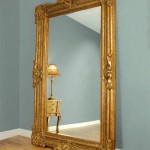Can You Use Wood Glue On A Mirror?
Attaching a mirror to a surface often requires a strong, reliable adhesive. While wood glue is known for its bonding strength with wood, its suitability for use with mirrors is a complex question. This article explores the factors that influence the effectiveness of using wood glue on a mirror, the potential risks involved, and alternative adhesive options.
Key Considerations When Using Adhesives with Mirrors
Several factors must be considered when choosing an adhesive for mirror application:
- The mirror's backing: Different backings react differently to various adhesives.
- The surface being adhered to: The adhesive must bond effectively with both the mirror and the mounting surface.
- Environmental conditions: Temperature and humidity can affect adhesive performance and potentially damage the mirror's silvering.
- Weight and size of the mirror: Heavier mirrors require stronger adhesives.
Why Standard Wood Glue Is Generally Not Recommended for Mirrors
Standard wood glue, typically polyvinyl acetate (PVA) based, is not generally recommended for adhering mirrors. This is due to several crucial factors:
- Moisture Content: Wood glue contains water, which can damage the mirror's silvering over time, causing black spots or clouding.
- Acidity: Some wood glues have a slightly acidic pH, which can also react with the mirror backing and cause deterioration.
- Lack of Flexibility: Wood glue is designed to create a rigid bond, which doesn't accommodate the slight expansion and contraction that mirrors can experience due to temperature fluctuations. This can lead to stress cracks in the mirror.
Potential Risks of Using Wood Glue on Mirrors
Using standard wood glue with a mirror presents several potential risks, making it a less than ideal choice:
- Silvering Damage: The moisture in wood glue can seep through the backing and damage the reflective silvering, ruining the mirror.
- Distortion: Uneven application of wood glue can create pressure points, potentially distorting the mirror's reflection.
- Difficult Removal: If the mirror needs to be removed, the strong bond of wood glue can make it extremely difficult, potentially damaging the mirror or the surface it's attached to.
Suitable Adhesives for Mirror Applications
Several adhesives are specifically designed for use with mirrors, offering a safer and more effective alternative to wood glue:
- Neutral-cure Silicone Sealant: This type of sealant is moisture-resistant, flexible, and provides a strong bond. It is often the preferred choice for adhering mirrors to various surfaces.
- Mirror Mastic: A specialized adhesive formulated for mirrors, mirror mastic offers excellent adhesion and remains slightly flexible to accommodate temperature changes.
- Double-sided Mirror Tape: For lighter mirrors, double-sided mirror tape can provide a quick and easy mounting solution.
Preparing the Mirror and Surface for Adhesion
Proper surface preparation is critical for successful mirror adhesion, regardless of the adhesive used:
- Cleaning: Both the mirror backing and the mounting surface must be thoroughly cleaned and dried. Any dust, dirt, or grease can compromise the adhesive bond.
- Primer: Applying a primer designed for glass or mirror adhesion can improve the bond strength and durability.
- Surface Compatibility: Ensure the adhesive is compatible with both the mirror backing material and the mounting surface.
Best Practices for Mirror Installation
Following best practices during mirror installation can help ensure a secure and long-lasting bond:
- Apply adhesive evenly: Ensure even distribution of the adhesive to prevent pressure points and ensure a uniform bond.
- Support during curing: Support the mirror adequately during the adhesive's curing time to prevent slippage and ensure proper adhesion.
- Follow manufacturer's instructions: Always consult and follow the adhesive manufacturer's instructions for application and curing time.
Choosing the Right Adhesive for Your Project
Selecting the correct adhesive for your mirror project depends on various factors:
- Mirror Size and Weight: Larger and heavier mirrors require stronger adhesives like mirror mastic or neutral-cure silicone.
- Mounting Surface: Consider the material of the mounting surface when selecting an adhesive to ensure compatibility.
- Environmental Conditions: If the mirror will be exposed to high humidity or temperature fluctuations, choose a moisture-resistant and flexible adhesive.
Long-Term Mirror Care and Maintenance
Proper care and maintenance can extend the life of your mirror and its adhesive bond:
- Avoid Harsh Chemicals: Use gentle cleaning solutions and avoid abrasive cleaners that could damage the mirror or the adhesive.
- Temperature Control: Avoid extreme temperature fluctuations that can stress the mirror and the adhesive bond.
- Regular Inspection: Periodically inspect the mirror and its mounting for any signs of loosening or damage.

4 Easy Steps To Glue Mirror Wood

How To Glue Wood Moulding A Mirror Create Faux Frame

How To Glue A Mirror Wood Fast Effective Start Woodworking Now

How To Diy Upgrade Your Bathroom Mirror With A Stained Wood Frame Building Our Rez

Diy Stick On Mirror Frame Sawdust Sisters

How To Glue Wood A Mirror Surface Hunker

How To Frame A Mirror With Clips Glue The Wall

How To Glue Wood Moulding A Mirror Create Faux Frame

How To Diy Upgrade Your Bathroom Mirror With A Stained Wood Frame Building Our Rez

How To Make A Diy Wood Frame Mirror With Mirrors Tea And Forget Me Nots

